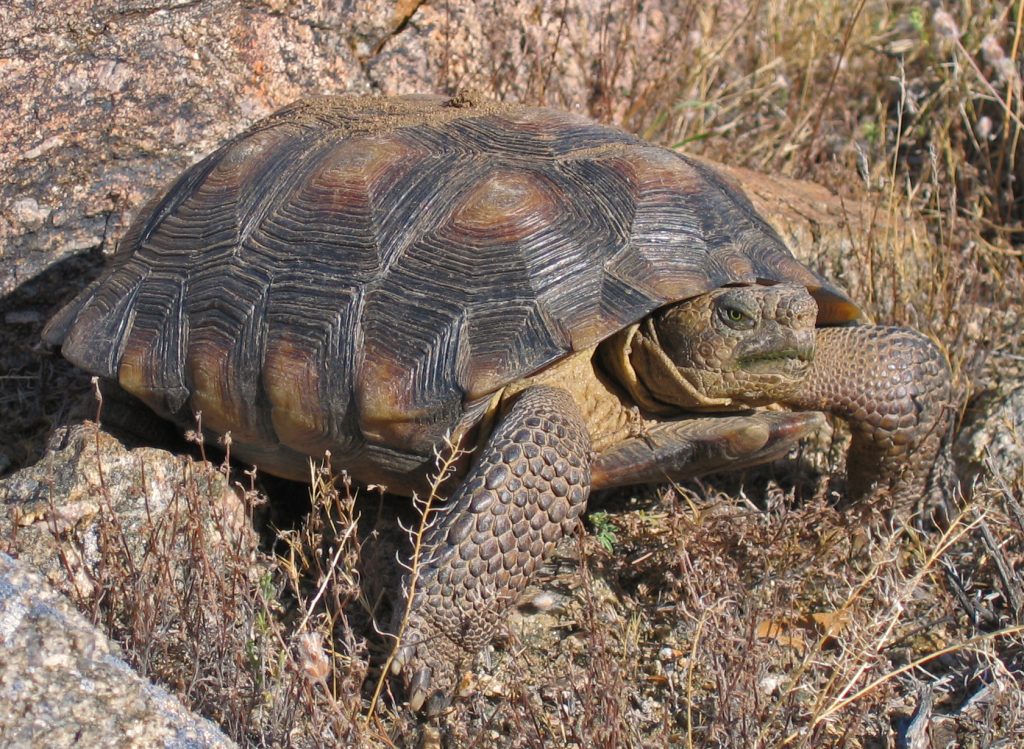TUCSON, ARIZONA—The U.S. Fish and Wildlife Service has announced that the iconic Sonoran desert tortoise does not warrant the protection of the Endangered Species Act (ESA).
Conservation groups remain concerned that the habitat of Sonoran desert tortoise is degraded by invasive species, livestock grazing, increase fire risk, housing developments, off-road vehicles, habitat fragmentation, and increased predation facilitated by human activities. Residential development has created artificial barriers to the tortoise’s movement and its natural genetic mixing. Continuous overgrazing in the desert has depleted the vegetation on which the species depends. Cattle are also known to trample and crush tortoises in their burrows.
“A decision to forego ESA listing must be based on the best available science, and we will make sure the Service complied with that duty here,” said Joe Bushyhead, Endangered Species Policy Advocate for WildEarth Guardians.
“It’s hopeful news that the Service thinks the future is rosy for the Sonoran desert tortoise based on the agency’s modeling scenarios, and we certainly hope they are right,” said Cyndi Tuell, the Arizona and New Mexico director for Western Watersheds Project. Tuell expressed her concerns about the 12-month finding that the tortoise is not warranted for protection. “For those of us who have visited Arizona’s public lands, we can clearly see that the species’ habitat is still gravely threatened by livestock grazing, off-road vehicles, abandoned mines, invasive species, and fires.”
The Service’s announcement asserts that 29 percent of the species’ range in Arizona is on publicly-owned lands managed specifically “for the benefit of wildlife.” This includes the Sonoran Desert National Monument where the Bureau resisted conducting a thorough or adequate analysis of the impacts of livestock grazing on natural values, including the tortoise, and simply forged ahead to authorize expanded livestock use in 2020. The Service failed to acknowledge the many uses of most public lands that will continue to affect the species habitat. The Service also relied on predictive modeling and other information not yet available to the public.
More than 8,500 square miles (over 5 million acres) of tortoise habitat is managed by the Bureau of Land Management for livestock grazing and over 77 percent of those grazing allotments have 10 year permits that have been renewed at least once without any analysis of the impacts to species like the tortoise. “We worry that the Service has put the tortoise on a collision course with extinction by minimizing the threats from livestock grazing throughout the tortoise’s habitat,” said Tuell.
Timeline of Sonoran desert tortoise protection efforts:
- 2008 Western Watersheds Project (WWP) and WildEarth Guardians (Guardians) file a petition to list the species under the Endangered Species Act
- 2009 U.S. Fish and Wildlife Service issues a 90-day finding that the tortoise should be considered as a Distinct Population Segment (DPS)
- 2010 Service determines that listing is warranted as a DPS, but precluded by higher priority species
- 2011 Service reaffirms this finding
- 2012 Service reaffirms this finding and determines the Sonoran desert tortoise is a separate species, which moves it up the priority list for the Service
- 2013 Service reaffirms this finding
- 2014 Service reaffirms this finding and starts preparing the proposed listing rule (formal process for listing the species under the Endangered Species Act)
- 2015 Service enters into a voluntary “candidate conservation agreement” with state and federal agencies to theoretically protect the tortoise and reaffirms in this agreement that the tortoise warrants listing under the Endangered Species Act
- 2015 Service uses a “very coarse model” based on elevation, vegetation type, and slope to assess the status of the tortoise.
- 2015 Service reverses its previous findings and issued a “not warranted” determination on the petition to list the tortoise and concludes the tortoise does not qualify for listing under the Endangered Species Act.
- 2019 WWP and WildEarth Guardians file a lawsuit seeking to overturn the “not warranted” determination as arbitrary and capricious and for failing to use the best available science in violation of the Endangered Species Act.
- 2020 Service agrees to revisit the 2015 “not warranted” determination.
- 2022 Service issues a “not warranted” determination for Sonoran desert tortoise.
Joe Bushyhead, WildEarth Guardians; (505) 660-0284; jbushyhead@wildearthguardians.org
Cyndi Tuell, Western Watersheds Project; (520) 272-2454; cyndi@westernwatersheds.org

Sonoran desert tortoise. Photo by U.S. Fish and Wildlife Service.


0 comments on “Fish and Wildlife Service denies federal protection for Sonoran desert tortoise”